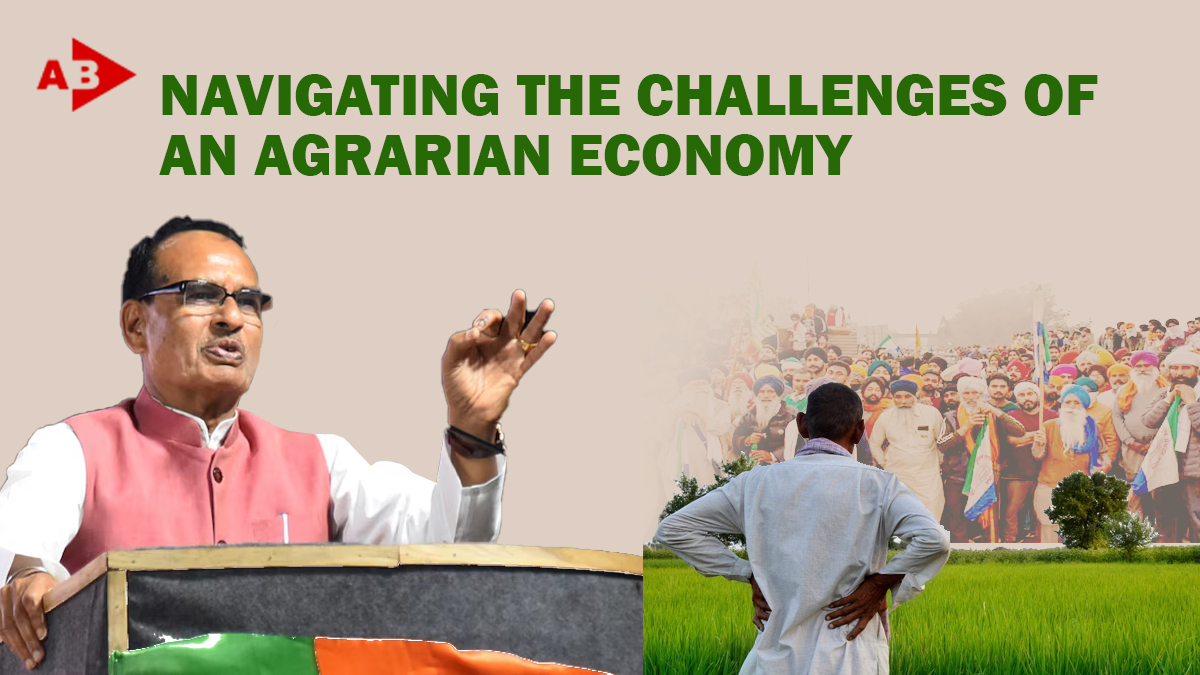
Navigating the Challenges of an Agrarian Economy
Jotirmoy Roy, AB News, New Delhi: In India, agriculture is the backbone of the economy, with over 50% of the population relying on it for their livelihoods. Recognizing the critical role farmer’s play, the Indian government has initiated various programs to enhance their welfare and alleviate the pressures that lead to protests. Despite these efforts, significant farmer agitations continue, revealing deep-seated issues that need to be addressed for a cohesive and prosperous agricultural sector.
Key Government Initiatives for Farmer Welfare
1. PM-KISAN Scheme
Launched in December 2018, the Pradhan Mantri Kisan Samman Nidhi (PM-KISAN) scheme is a flagship initiative aimed at providing direct cash assistance of ₹6,000 per year to farmers. Targeting small and marginal farmers, this program aims to ease financial burdens and enhance their economic stability.
2. Soil Health Card Scheme
This initiative promotes sustainable agriculture by offering farmers a detailed analysis of soil health, including nutrient levels and tailored crop recommendations. By reducing fertilizer dependence and increasing productivity, this initiative reflects a holistic approach to improving agricultural yields.
3. Crop Insurance Schemes
The Pradhan Mantri Fasal Bima Yojana (PMFBY) is designed to protect farmers’ incomes by providing financial support in the event of crop loss due to natural disasters, pests or diseases. This initiative aims to provide a safety net, encouraging farmers to take necessary risks without the fear of losing their livelihoods.
4. Digital Agriculture Initiatives
The government is actively promoting technology in agriculture, with platforms like e-NAM (National Agriculture Market) facilitating better market access and price discovery for farmers. By leveraging digital tools, farmers can obtain timely market information and weather forecasts, improving their decision-making processes.
5. Cooperative Movement and Farmer Producer Organizations (FPOs)
The government is fostering collective bargaining through the establishment of Farmer Producer Organizations (FPOs). These cooperatives aim to enhance farmers’ access to resources, better market conditions, and collective marketing of produce, ultimately leading to increased profits.
Farmer Agitation: A Complex Landscape
Despite these initiatives, discontent among farmers remains palpable, leading to nationwide agitations, particularly against controversial farm laws introduced in 2020. Farmers feared that these laws would undermine the Minimum Support Price (MSP) structure and favor corporate interests over small farmers. After extensive protests, the laws were repealed in November 2021, yet many underlying issues persist.
Unresolved Challenges
While government initiatives have brought about some improvements, several challenges remain:
– Access to Information: A significant portion of farmers lacks awareness of available government schemes due to poor outreach and low literacy levels. This gap results in underutilization of beneficial programs.
– Market Access: Despite platforms like e-NAM, farmers continue to struggle in accessing markets and negotiating fair prices for their produce. The need for better infrastructure and market integration is evident.
– Debt and Financial Stress: High levels of indebtedness contribute to financial instability, hindering farmers’ ability to invest in their agricultural practices. This cycle of debt impacts overall productivity and well-being.
Government’s Commitment to Dialogue and Reform
In light of these challenges, Union Agriculture Minister Shivraj Singh Chouhan has reiterated the government’s commitment to dialogue with farmers. He affirms that the Ministry of Agriculture remains open to addressing concerns proactively. Over the past months, significant decisions have been made to enhance support for farmers, including ongoing increases in MSP and improvements in fertilizer subsidies.
Chouhan has emphasized that maintaining regular communication with farmers will help tailor policies based on their feedback. By actively engaging with various farmer organizations, the government aims to build trust and collaboratively find solutions to pressing issues.
Towards Sustainable Agricultural Policies
The Indian government’s trajectory of agricultural reform reflects a serious commitment to enhancing the conditions for farmers, but it continues to grapple with significant resistance from the farming community. As India navigates this complex landscape, a deeper understanding of the initiatives taken alongside the reasons behind ongoing agitations is essential for developing sustainable and equitable agricultural policies.
Under the leadership of Union Agriculture Minister Shivraj Singh Chouhan, the government has implemented various measures aimed at improving farmers’ income and production capabilities. Initiatives such as the PM-KISAN scheme, the Soil Health Card Scheme, and crop insurance programs are designed to provide financial assistance, promote sustainable farming, and safeguard against crop failure. However, despite these efforts, the persistent unrest among farmers underscores the complexities and frustrations that exist within the agricultural sector.
As the government outlines its plans and engages with stakeholders, the challenge remains in effectively implementing these initiatives to ensure that they translate into real improvements for farmers. The recent agitations have highlighted these challenges, pointing to unmet expectations and a lack of adequate outreach regarding available benefits. Farmers have consistently expressed their grievances, emphasizing the need for better market access, access to timely information and a robust support system.
Recognizing the necessity of farmer engagement, Chouhan has emphasized the importance of open channels of communication between the government and the agricultural community. A collaborative approach that actively involves farmers’ voices in the policymaking process is seen as pivotal to achieving lasting reforms and ensuring the overall prosperity of India’s agricultural landscape.
Ultimately, by focusing on the nuances of farmer challenges and prioritizing their input, the government can foster a more resilient and effective agricultural sector that meets the needs of the community. As India progresses, it is crucial for the government to listen and adapt, facilitating sustainable growth in this vital sector for present and future generations. The farmer’s voice must remain at the center of policy development to create a truly equitable environment that benefits the entire agricultural community.
This article aims to provide insights into the complex relationship between government policies and farmer responses in India. By understanding these dynamics, readers can better appreciate the challenges facing the Indian agricultural landscape today.


